
Introduction
The Sony A7R V is a professional 35mm full-frame mirrorless camera with a 61 megapixel back-side illuminated (BSI) CMOS Exmor R sensor.
This is paired with the very latest BIONZ XR processor, as also featured in the flagship Alpha 1, which as well as offering 8x more processing power than the previous A7R IV model also promises to “improve the basic image quality”, at least according to Sony.
The A7R V has a special multi-shot shooting mode in which they take 16 different images that can then be combined using the Imaging Edge Desktop software to produce a single, 241-megapixel image. The camera can automatically detect and correct small movements in the 16 images, such as leaves in trees or people, something which the A7R IV lacked.
The A7RV can record 8K/25p and 4K/60p with a modest 1.2x crop in 10bit 4:2:2 quality. It also offers 4K/30/25/24p and 1080/120p recording with no crop.
The new A7R V has 693 on-sensor phase-detection AF points covering 79% of the image frame and can focus down to EV-4. Sony has also added an AI deep learning processing unit to this camera which enables it to recognise far more subjects than the previous model, and also greatly improves the detection of humans and animals/birds.
The burst shooting rate of the new model is exactly the same as the old one – 10fps with either the mechanical or electronic shutter – but it does have a larger buffer.
Thanks to a newly redesigned stabilisation unit, the A7R V now offers up to 8 stops of in-body stabilisation, making it the most capable Alpha camera in this regard.
It has a very impressive 9.44M-dot OLED Quad-XGA electronic viewfinder with 0.90x magnification and a refresh rate of up to 120fps, paired with a 3.2-inch, 2095K dot resolution LCD screen. This 4-axis multi-angle screen can be flipped out to the side, rotated to the front, folded against the back of the camera to help protect it, and set to many other positions in-between.
The A7RV has dual memory card slots can be used for either SD UHS-I/II compliant memory cards or faster CFexpress Type A cards, plus a number of connectivity upgrades including remote tethered shooting via wireless LAN or USB, 2.4GHz and 5GHz wi-fi, FTP transfer, and the ability to operate as a 4K/15p webcam.
The Sony A7R V is available now priced at around £4,000 body only in the UK, $3,900 in the US and €4,500 in Europe. It is made in Thailand.
Ease of Use
 |
The A7R V is one of the most capable cameras that Sony has ever released, but it’s also one of the most expensive too, second only to the flagship A1 in the extensive Alpha range.
Three years is a long time in the world of digital cameras, especially the mirrorless market, so a lot has changed since 2019 with the recent release of the A7R V.
Indeed, the A7R V is one of Sony’s most ambitious full-frame sensor cameras to date, both in terms of what it offers and how much it costs.
Successor to the popular 3-year-old A7R IV, the new A7R V may look very similar to its predecessor but it boasts a number of significant improvements under-the-hood that in some ways means that it out-performs even the flagship Alpha 1 model.
At its heart is the same 61 megapixel backside-illuminated (BSI) sensor as the A7R IV, but which Sony promises will deliver improved basic image quality thanks to its new processor.
 |
This is paired with dual Bionz XR processors, as previously debuted in the A1, which powers all of the A7R V’s principal new features and offers a whopping 8x more processing power than the A7R IV.
Both cameras have a special multi-shot shooting mode in which they take 16 different images that can then be combined using the Imaging Edge Desktop software to produce a single, 241-megapixel image.
On the new A7RV, the versatility of the the popular Pixel Shift Multi Shooting mode has been greatly expanded, as this new model can now automatically detect and correct small movements in the 16 images, such as leaves in trees or people.
On the A7R IV this mode only really worked with completely static subjects, so this improvement greatly expands where and when you can deploy the Pixel Shift Multi Shooting mode.
The native sensitivity range of the Sony A7R V and the A7R IV is identical – ISO 100-32,000, which can be expanded down to ISO 50 and up to ISO 102,400.
 |
Wildlife photographers will love the camera’s Multi Resolution capabilities. The A7R V inherits the Lossless Compressed RAW format that was previously introduced on the flagship A1, which reduces the file size by 50-80%.
Another brand new feature is the ability to choose 26 megapixel / Medium or 15 megapixel / Small versions of both RAW and JEPG/HEIF files.
Even better is the new ability to switch from 60 megapixel full-frame to 26 megapixel APS-C stills when shooting Lossless Compressed RAW or JEPG/HEIF, enabling you to instantly “zoom in” on your subject at the push of one customisable button without the need to change either focal lengths or lenses.
The A7R IV had 567 on-sensor phase-detection AF points covering 74% of the image frame, whereas the new A7R V has 693 on-sensor phase-detection AF points covering 79% of the image frame.
The A7R V also has another slight edge as it can focus down to EV-4 as opposed to the A7R IV’s EV-3. By far the biggest difference between the two models in terms of their auto-focusing performance is subject recognition.
 |
Sony has added an AI deep learning processing unit to the newer camera which enables it to recognise far more subjects than both the previous A7R IV and flagship A1 model, and also greatly improves the detection of humans and animals/birds.
For the first time on any Sony camera, the A7R V can recognise a human via its pose as well as its eye and face. So if the person’s head is turned away from the camera, the A7 R V will still accurately detect the subject as human based on its AI deep learning.
Animal and bird detection has been expanded from just being able to recognise the eye on the Mark IV to the eye, head and body on the Mark V.
New to the A7RV is the ability to recognise airplanes, cars, trains and insects, all things which even the flagship Alpha 1 can’t currently detect (running version 1.30 firmware).
We tested it on a range of subjects including birds, cars, insects and of course humans, and were blown away both by how quickly the subject was recognised and by how tenacious the camera was in tracking it.
 |
With a wealth of customisation options for each different subject, you really can fine-tune what is already a very capable out-of-the-box system to suit your own specific requirements.
As the AI processor unit is exclusively built-in to to the new A7R V, for the moment at least it means that this new model out-performs even the flagship Alpha 1.
The Alpha A7R V is also a much better video camera than the previous model, offering a large number of significant upgrades that position it closer to the flagship A1, including the ability to record at 8K/25p and 4K/60p quality, albeit with a mild 1.2x crop. It also offers 4K/30/25/24p and 1080/120p recording with no crop.
In contrast, the previous A7RIV model can only record 4K/30p with no crop in 8bit 4:2:0 quality. It doesn’t offer either 8K or 4K/60p recording.
Other new video features supported by the A7R V include 16 bit RAW output, S-Cinetone profile, breathing compensation, focus map, and Active+ stabilisation.
 |
The burst shooting rate of the new model is exactly the same as the old one – 10fps with either the mechanical or electronic shutter – but the buffer size has been greatly increased so that it takes a lot longer for the camera to slow-down the shooting rate.
Whereas the A7R IV could only shoot 10fps bursts up to for 68 JPEG and 68 compressed RAW images before the recording rate slowed down, the new A7R V can record up to 88 uncompressed RAW, 184 compressed RAW+ JPEG, 583 compressed RAW, or 1000+ JPEGs, which is pretty impressive for a 61 megapixel camera!
One of the most significant upgrades on the A7R V is its staggeringly good LCD screen. Bigger and higher-resolution than its predecessor’s, the biggest change is the new screen’s sheer versatility. It has a 3.2-inch, 2095K dot resolution screen compared to the A7R IV’s 3.0-inch LCD screen with 1440K dots of resolution.
This incredible new 4-axis multi-angle screen that can be flipped out to the side, rotated to the front, folded against the back of the camera to help protect it, and set to many other positions in-between.
It makes the camera ever-so-slightly thicker than its predecessor, but more than makes up for that with its incredible versatility – this is simply one of, if not the best, LCD screens that we’ve ever used in 20 years of reviewing digital cameras!
 |
In terms of touch-screen functionality, the new Alpha A7R V thankfully follows in the footsteps of the A7S III and A1, inheriting the same menu structure and upgraded touch control, rather than the crippled touchscreen and more complex menu system of earlier Alpha models, which included the A7R IV.
The new Alpha A7R V has exactly the same viewfinder as the A7S III – a very impressive 9.44M-dot OLED Quad-XGA electronic viewfinder with 0.90x magnification and a refresh rate of up to 120fps.
The release of A7R V marks a big step forward for IBIS in Sony Alpha cameras. Most previous models, including the A7R IV, have exactly the same 5-axis optical in-body image stabilization system which provides up to 5.5-stops of compensation.
This has been one of the few areas where Sony lags behind some of it main rivals, with some offering up to 8 stops of compensation when used with certain lenses.
Now Sony has joined the party with the launch of the A7R V, which thanks to a newly redesigned stabilisation unit now offers up to 8 stops of in-body stabilisation, making it the most capable Alpha camera in this regard.
 |
The A7R V also benefits from having a special Active Mode that increases stabilization for hand-held movie shooting by using the BIONZ XR processors.
Both of the new A7R V’s memory card slots can be used for either SD UHS-I/II compliant memory cards or faster CFexpress Type A cards, just like the Alpha 1. The A7R IV has dual UHS-II memory card slots but doesn’t support CFexpress.
It also offers a number of connectivity upgrades including remote tethered shooting via wireless LAN or USB, 2.4GHz and 5GHz wi-fi, FTP transfer, and the ability to operate as a 4K/15p webcam.
Both the A7R V and A7R IV cameras use exactly the same NP-FZ100 battery, although the actual battery life does vary between them, with the former achieving 430 shots per charge when using the EVF and 530 when using the LCD monitor and the A7R IV 530 shots per charge when using the EVF and 670 when using the LCD monitor.
So the new Alpha 7R V lags behind the older model somewhat, presumably because of the extra demands placed upon it by the dual Bionz XR processors.
 |
If you were hoping that the Sony A7R V would radically deviate from the tried and trusted Alpha blueprint, then you’ll be sorely disappointed, as it’s virtually identical to its predecessor.
The one-touch movie record button has been moved from the rear of the camera to the top-plate, swapping positions with the C1 button and also made larger in the process.
The new exposure compensation dial is unmarked rather than displaying the +-3EV values as on the A7R IV, reflecting the fact that it can now be customised on the new model.
There is now a handy Still / Movie / S&Q dial located under the shooting mode dial. with the camera remembering the menu settings for each mode.
The A7R V is slightly thicker than its predecessor because of its clever new 4-axis LCD screen. It has a newly developed heat-dissipating structure that prevents overheating during video recording and burst shooting.
 |
The memory card slot now has a lockable switch to help make it more secure, while the camera’s shutter mechanism is closed and protected by a cover when the it is powered off. There’s also a new anti-dust system and the A7R V offers 500,000 frame shutter life.
It may look a lot like its predecessor, but after using the new A7R V for a while it’s clear that this is one very capable camera that in some ways actually outshines the awesome Alpha 1, most notably the more capable IBIS, more versatile LCD screen, and more encompassing AF system.
With a price-tag that’s significantly lower than the A1, for lots of photographers the A7R will make a lot of financial sense whilst also being a more “capable” camera in several important ways.
Overall, we’ve come away very impressed with the new A7R V, a hybrid powerhouse that is much more than just Sony’s latest high-resolution camera.
Image Quality
All of the sample images in this review were taken using the 61 megapixel Extra Fine JPEG setting, which produces an average image size of around 43Mb.
The Sony A7R V produced images of outstanding quality during the review period.
The A7R V has an extensive and very usable ISO range of 50-102400. ISO 50-6400 is essentially noise-free, while ISO 12800 and 25600 produce more than acceptable results, and even ISO 51200 is OK for emergency use, although we’d hesitate to use the fastest setting of ISO 102400.
The RAW samples illustrate just how much processing the camera does by default, though, as they’re noisier at the higher ISO values than their JPEG counterparts, with more unwanted colour artifacts.
The effective Dynamic Range Optimizer function extracts more detail from the shadow and highlight areas in an image, without introducing any unwanted noise or other artifacts.
Sony’s colour profiles are split into ‘creative looks’ and ‘picture profiles’, with the former most suitable for stills and the latter for video, although either can be applied to both stills and video.
The night photograph was excellent, with the maximum shutter speed of 30 seconds and the Bulb mode offering lots of scope for creative night photography.
Noise
There are 12 ISO settings available on the Sony A7R V. Here are some 100% crops which show the noise levels for each ISO setting for both JPEG and RAW file formats.
| JPEG | RAW |
|
ISO 50 (100% Crop) |
ISO 50 (100% Crop) |
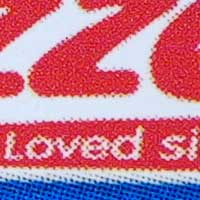 |
 |
|
ISO 100 (100% Crop) |
ISO 100 (100% Crop) |
 |
 |
|
ISO 200 (100% Crop) |
ISO 200 (100% Crop) |
 |
 |
|
ISO 400 (100% Crop) |
ISO 400 (100% Crop) |
 |
 |
|
ISO 800 (100% Crop) |
ISO 800 (100% Crop) |
 |
 |
|
ISO 1600 (100% Crop) |
ISO 1600 (100% Crop) |
 |
 |
|
ISO 3200 (100% Crop) |
ISO 3200 (100% Crop) |
 |
 |
|
ISO 6400 (100% Crop) |
ISO 6400 (100% Crop) |
 |
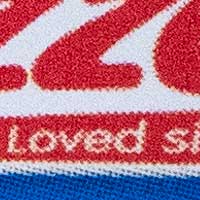 |
|
ISO 12800 (100% Crop) |
ISO 12800 (100% Crop) |
 |
 |
|
ISO 25600 (100% Crop) |
ISO 25600 (100% Crop) |
 |
 |
|
ISO 51200 (100% Crop) |
ISO 51200 (100% Crop) |
 |
 |
|
ISO 102400 (100% Crop) |
ISO 102400 (100% Crop) |
 |
 |
File Quality
The Sony A7R V has 4 different JPEG image quality settings available, with Extra Fine being the highest quality option. The A7R V also supports the HEIF file format with 2 options available. There are 3 different Raw compression settings, with Uncompressed being the highest quality option.
Thanks to a higher compression efficiency, HEIF files are smaller than JPEGs even though they contain significantly more data. How much more? Well, HEIF files are 10-bit whereas JPEG files are 8-bit. It’s a heck of a lot more tonal detail and wider colour gamut.
In the A7R V both HEIF and JPEG formats are available, although you can’t select both at the same time. Whichever format option you select can then be captured independently or simultaneously with RAW.
Here are some 100% crops which show the quality of the various options, with the actual file size shown in brackets.
Night
The Sony A7R V’s maximum shutter speed is 30 seconds and there’s also a Bulb mode for even longer exposures, which is excellent news if you’re seriously interested in night photography. The shot below was taken using a shutter speed of 30 seconds at ISO 100.
 |
Dynamic Range Optimizer
D-Range Optimiser (DRO) is Sony’s solution to improve shadow detail in photos taken in contrasty light. There are 5 different levels and an Auto option.
Creative Looks
There are 10 Creative Look preset effects that you can use to change the look of your images which are available when shooting JPEG and/or Raw files.
There are ten creative look presets for JPEG pictures and an additional six ‘custom’ presets can be manually stored for quick access. The presets are Standard (‘ST’), Portrait (‘PT’), Neutral (‘NT’), Vivid (‘VV’), ‘VV2’, ‘FL’, ‘IN’, ‘SH’, Black & White (‘BW’) and Sepia (‘SE’).
|
ST |
 |
|
PT |
 |
|
NT |
 |
|
VV |
 |
|
VV2 |
 |
|
FL |
 |
|
IN |
 |
|
SH |
 |
|
BW |
 |
|
SE |
 |
Picture Profiles
The Sony A7R V offers a range of 11 Picture Profiles which are available when shooting JPEG and/or Raw files.
In addition to the creative looks, there are picture profile primarily designed for video use. By default, the ten parameters (PP1-PP11) are set to cover the following in-camera gamma profiles; Movie, still, Cine1-4, ITU709, ITU 709 (800%), S-Log-2, S-Log3 and HLG1-3), with manual control over numerous parameters including black level, colour mode and saturation.
|
PP1 |
 |
|
PP2 |
 |
|
PP3 |
 |
|
PP4 |
 |
|
PP5 |
 |
|
PP6 |
 |
|
PP7 |
 |
|
PP8 |
 |
|
PP9 |
 |
|
PP10 |
 |
|
PP11 |
 |
Sample Images
This is a selection of sample images from the Sony A7R V camera, which were all taken using the 61 megapixel Extra Fine JPEG setting. The thumbnails below link to the full-sized versions, which have not been altered in any way.
Sample RAW Images
The Sony A7R V enables users to capture RAW and JPEG format files. We’ve provided some Sony RAW (ARW) samples for you to download (thumbnail images shown below are not 100% representative).
Sample Movies & Video
Product Images





















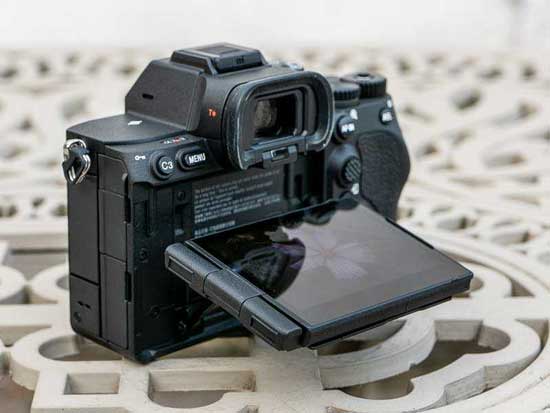






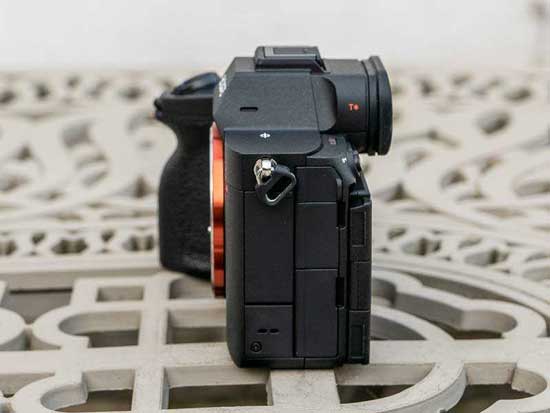


Conclusion
The Sony A7R V has clearly evolved beyond being just Sony’s highest-resolution camera to become a hybrid powerhouse that in lots of ways challenges even the flagship A1 model.
With 8K and 4K/60p video recording, the best AI and IBIS systems of any current Alpha camera, a great viewfinder and fantastically versatile LCD screen, the new A7R V is a compelling all-rounder.
Costing around £4,000 body only in the UK, $3,900 in the US and €4,500 in Europe, it’s also significantly cheaper than the flagship Alpha 1 too, so you could buy a quality GM lens to go with the A7R V for around the same price as the A1 body-only.
In fact, unless you really need the lightning fast 30fps burst speeds offered by the A1 thanks to its stacked CMOS sensor with integral memory, which delivers faster performance and much faster burst speeds, then for us the A7R V is a better fit for most enthusiast photographers.
Having said that, the Alpha A7R V is a much better video camera than the previous A7R IV model, but it still can’t quite match the flagship A1 which additionally provides 8K/30p, 4K 120p and 1080 240p recording options, so 50/50 hybrid video and stills shooters should probably opt for the flagship model if they can afford it.
Although it can’t quite match the Alpha 1 in terms of video specs or continuous shooting speeds, the new A7R V actually outperforms its big brother in some ways, most notably the more capable AI-driven AF system which can recognise more subjects more easily, the excellent 4-axis LCD screen, more effective 8-stop IBIS, and of course its continued billing as the highest-resolution Alpha camera, all at a much lower price point.
The A7R V’s main rival is probably the recently released Nikon Z8, which takes almost everything that we loved about the flagship Z9 and squeezes it into a much smaller, lighter and crucially significantly cheaper body. The Sony A7R V is less of an all-round hybrid camera than the Z8, perhaps better suited to stills photography with its amazing viewfinder, mechanical shutter and higher megapixel count.
It’s also a close run thing between the Sony A7R V and the Canon EOS R5, with the former offering more megapixels, an incredible LCD screen and viewfinder, and a 241 megapixel multi-shot shooting mode, but Canon fighting back with uncropped 8K and 4K video, much faster burst shooting, and a more ergonomic design.
Overall, the Sony A7R V is a fantastic full-frame camera that’s especially suited to stills but which doesn’t forget videographers, offering a multitude of improvements that make it both a massive upgrade from its predecessor and a serious alternative to the more expensive flagship Alpha 1.
| Ratings (out of 5) | |
|---|---|
| Design | 5 |
| Features | 5 |
| Ease-of-use | 4.5 |
| Image quality | 5 |
| Value for money | 4.5 |
Main Rivals
Listed below are some of the rivals of the Sony A7R V.
The EOS R5 has been the hottest full-frame camera on the block ever since Canon pre-announced it back at the start of 2020, thanks to its headline grabbing twin features of a 45 megapixel sensor and 8K video recording. We’ve seen it a few times since then, but now we can finally bring you our final Canon R5 review, complete with full-size sample photos and videos!

The new 100-megapixel medium-format Fuji GFX 100S is smaller, lighter and more versatile than the flagship GFX 100, and crucially, significantly cheaper too. So much so that it steps on the toes of high-end 35mm full-frame cameras like the Sony Alpha 1, Canon EOS R5 and Nikon Z7 II. Does the GFX 100S really prove that medium-format is “More than full-frame”, and is it really better than the GFX 100? Find out now by reading our in-depth review, complete with a huge gallery of full-size sample images and videos…

The new Fuji GFX 50S II is the most affordable medium-format ever released – it’s so cheap that it competes with high-end 35mm full-frame cameras like the Sony Alpha 7R IV, Canon EOS R5 and Nikon Z7 II. But surely there’s a catch – is it just too affordable for its own good? Find out now by reading our in-depth Fujifilm GFX 50S II review, complete with full-size sample photos and videos…

The Hasselblad X1D II 50c is a modern medium-format mirrorless camera with a 51 megapixel sensor, large 3.6-inch touchscreen LCD and an improved electronic viewfinder, all housed in a beautifully crafted body. Read our in-depth Hasselblad X1D II 50c review now…

As the spiritual successor to the popular D850 DSLR, the new Z8 full-frame mirrorless camera could turn out to be one of the most important products that Nikon have ever released. Read our in-depth Nikon Z8 review, complete with full-size sample photos and videos, to find out more about this mirrorless marvel…

The Sony Alpha 1 camera, or Sony A1 for short, is the best camera that Sony have ever released, and currently the best all-round camera on the market. It’s also one of the most expensive, so read our in-depth Sony A1 review complete with full-size sample JPEG and Raw photos and movies to find out if it’s truly the One for you…

Traditionally, you’d have to make a tough choice between resolution and speed when it comes to high-end cameras, but with the new flagship A7R IV mirrorless model, Sony are attempting to offer the best of both worlds. Can it really succeed as a camera that suits all kinds of photographers? Read our in-depth Sony A7R IV review to find out…
Review Roundup
Reviews of the Sony A7R V from around the web.
In late 2022, almost a decade after the debut of the original mirrorless Alpha 7R, the wraps came off the Sony Alpha A7R V, or just the A7R V as it’s most commonly known. As the name implies, it is the fifth in the series, and still the newest. And, just like every ‘R’ series camera, it’s a camera for those who want maximum resolution and image detail.
Read the full review »
The Sony a7R V is built around the same 60MP BSI CMOS full-frame sensor as the Mark IV was, but Sony says the new processor allows it to use the full extent of the sensor’s capabilities in a way the previous generation camera couldn’t. The company wouldn’t be any more specific in its claim, making it difficult to assess.
Read the full review »
A bit like Coen brothers movies, Sony cameras can be good and then great, alternating between the two. But with the A7R V, it’s safe to say that it’s in the ‘great’ category, and maintains the position of the highest-resolution full-frame mirrorless camera available. However, while some features are geared towards sport and wildlife, it doesn’t offer the burst rates of the A9 II, and video is good, but not as good as what you get with the A7S III. So the A7R V appears to be a jack of all trades, but only a master of some.
Read the full review »
More power! More speed! More everything! The Sony A7R V is like an episode of laddish TV show Top Gear. But while Sony pitches this camera as the resolution specialist, it blurs all the video and sports boundaries too and makes it harder than ever to choose the ‘right’ Sony camera. The A7R V is an amazing technological achievement, but is it heading in the right direction – or indeed any particular direction at all?
Read the full review »
Specifications
Lens
- LENS MOUNT
- E-mount
Image Sensor
- ASPECT RATIO
- 3:2
- NUMBER OF PIXELS (EFFECTIVE)
- Approx. 61.0 megapixels
- NUMBER OF PIXELS (TOTAL)
- Approx. 62.5 megapixels
- SENSOR TYPE
- 35mm full frame (35.7 x 23.8 mm), Exmor R CMOS sensor
- ANTI-DUST SYSTEM
- Yes (Charge protection coating on Optical Filter and ultrasonic vibration mechanism)
Recording (still images)
- RECORDING FORMAT
- JPEG (DCF Ver. 2.0, Exif Ver. 2.32, MPF Baseline compliant), HEIF (MPEG-A MIAF compliant), RAW (Sony ARW 4.0 format compliant)
- IMAGE SIZE (PIXELS) [3:2]
- 35mm full frame L: 9504 x 6336 (60 M), M: 6240 x 4160 (26 M), S: 4752 x 3168 (15 M), APS-C M: 6240 x 4160 (26 M), S: 4752 x 3168 (15 M)
- IMAGE SIZE (PIXELS) [4:3]
- 35mm full frame L: 8448 x 6336 (54 M), M: 5552 x 4160 (23 M), S: 4224 x 3168 (13 M), APS-C M: 5552 x 4160 (23 M), S: 4224 x 3168 (13 M)
- IMAGE SIZE (PIXELS) [16:9]
- 35mm full frame L: 9504 x 5344 (51 M), M: 6240 x 3512 (22 M), S: 4752 x 2672 (13 M), APS-C M: 6240 x 3512 (22 M), S: 4752 x 2672 (13 M)
- IMAGE SIZE (PIXELS) [1:1]
- 35mm full frame L: 6336 x 6336 (40 M), M: 4160 x 4160 (17 M), S: 3168 x 3168 (10 M), APS-C M: 4160 x 4160 (17 M), S: 3168 x 3168 (10 M)
- IMAGE QUALITY MODES
- RAW (Compressed / Lossless Compressed (L / M / S) / Uncompressed), JPEG (Extra fine / Fine / Standard / Light), HEIF (4:2:0 / 4:2:2) (Extra fine / Fine / Standard / Light), RAW & JPEG, RAW & HEIF
- PICTURE EFFECT
- –
- CREATIVE STYLE
- –
- PICTURE PROFILE
- Yes (Off / PP1-PP11) Parameters: Black level, Gamma (Movie, Still, S-Cinetone, Cine1-4, ITU709, ITU709 [800%], S-Log2, S-Log3, HLG, HLG1-3), Black Gamma, Knee, Color Mode, Saturation, Color Phase, Color Depth, Detail, Copy, Reset
- CREATIVE LOOK
- ST, PT, NT, VV, VV2, FL, IN, SH, BW, SE, Custom Look (1-6)
- DYNAMIC RANGE FUNCTIONS
- Off, Dynamic Range Optimizer
- COLOUR SPACE
- sRGB standard (with sYCC gamut), Adobe RGB standard and Rec. ITU-R BT.2100 standard (BT.2020 gamut).
1 - 14BIT RAW
- Yes
Recording (movie)
- RECORDING FORMAT
- XAVC S, XAVC HS
- COLOUR SPACE
- Rec. ITU-R BT.2100 standard compatible (BT.2020 gamut)
2 - PICTURE EFFECT
- –
- CREATIVE STYLE
- –
- SOFT SKIN EFFECT
- Yes
- PICTURE PROFILE
- Yes (Off / PP1-PP11) Parameters: Black level, Gamma (Movie, Still, S-Cinetone, Cine1-4, ITU709, ITU709 [800%], S-Log2, S-Log3, HLG, HLG1-3), Black Gamma, Knee, Color Mode, Saturation, Color Phase, Color Depth, Detail, Copy, Reset
- CREATIVE LOOK
- ST, PT, NT, VV, VV2, FL, IN, SH, BW, SE, Custom Look (1-6)
- MOVIE RECORDING SYSTEM (XAVC HS 8K)
- 7680 x 4320 (4:2:0, 10bit, NTSC) (Approx.): 24p (400 Mbps / 200 Mbps)
3
4
, 7680 x 4320 (4:2:0, 10bit, PAL) (Approx.): 25p (400 Mbps / 200 Mbps)]
4
- MOVIE RECORDING SYSTEM (XAVC HS 4K)
- 3840 x 2160 (4:2:0, 10bit, NTSC) (Approx.): 60p (150 Mbps / 75 Mbps / 45 Mbps)
3
5
, 24p (100 Mbps / 50 Mbps / 30 Mbps)
3
, 3840 x 2160 (4:2:0, 10bit, PAL) (Approx.): 50p (150 Mbps / 75 Mbps / 45 Mbps)
5
, 3840 x 2160 (4:2:2, 10bit, NTSC) (Approx.): 60p (200 Mbps / 100 Mbps)
3
5
, 24p (100 Mbps / 50 Mbps)
3
, 3840 x 2160 (4:2:2, 10bit, PAL) (Approx.)): 50p (200 Mbps / 100 Mbps)
5 - MOVIE RECORDING SYSTEM (XAVC S 4K)
- 3840 x 2160 (4:2:0, 8bit, NTSC) (Approx.): 60p (150 Mbps)
3
5
, 30p (100 Mbps / 60 Mbps)
3
, 24p (100 Mbps / 60 Mbps)
3
, 3840 x 2160 (4:2:0, 8bit, PAL) (Approx.): 50p (150 Mbps)
5
, 25p (100 Mbps / 60 Mbps),3840 x 2160 (4:2:2, 10bit, NTSC) (Approx.): 60p (200 Mbps)
3
5
, 30p (140 Mbps)
3
, 24p (100 Mbps)
3
, 3840 x 2160 (4:2:2, 10bit, PAL) (Approx.): 50p (200 Mbps)
5
, 25p (140 Mbps) - MOVIE RECORDING SYSTEM (XAVC S HD)
- 1920 x 1080 (4:2:0, 8bit, NTSC) (Approx.): 120p (100 Mbps / 60 Mbps)
3
6
, 60p (50 Mbps / 25 Mbps)
3
, 30p (50 Mbps / 16 Mbps)
3
, 24p (50 Mbps)
3
,1920 x 1080 (4:2:0, 8bit, PAL) (Approx.): 100p (100 Mbps / 60 Mbps)
6
, 50p (50 Mbps / 25 Mbps), 25p (50 Mbps / 16 Mbps),1920 x 1080 (4:2:2, 10bit, NTSC) (Approx.): 60p (50 Mbps)
3
, 30p (50 Mbps)
3
, 24p (50 Mbps)
3
,1920 x 1080 (4:2:2, 10bit, PAL) (Approx.):50p (50 Mbps), 25p (50 Mbps) - MOVIE RECORDING SYSTEM (XAVC S-I 4K)
- 3840 x 2160 (4:2:2, 10bit, NTSC) (Approx.): 60p (600 Mbps)
3
5
, 30p (300 Mbps)
3
, 24p (240 Mbps)
3
, 3840 x 2160 (4:2:2, 10bit, PAL) (Approx.): 50p (500 Mbps)
5
, 25p (250 Mbps) - MOVIE RECORDING SYSTEM (XAVC S-I HD)
- 1920 x 1080 (4:2:2, 10bit, NTSC) (Approx.): 60p (222 Mbps)
3
, 30p (111 Mbps)
3
, 24p (89 Mbps)
3
,1920 x 1080 (4:2:2, 10bit, PAL) (Approx.): 50p (185 Mbps), 25p (93 Mbps) - SLOW & QUICK MOTION (SHOOTING FRAME RATE)
- NTSC mode: 1fps,2fps,4fps,8fps,15fps,30fps,60fps,120fps
7
8
6
, PAL mode: 1fps,2fps,3fps,6fps,12fps,25fps,50fps,100fps
7
8
6 - MOVIE FUNCTIONS
- Audio Level Display, Audio Rec Level, PAL/NTSC Selector, Proxy Recording (1280 x 720 (Approx. 6 Mbps), 1920 x 1080 (Approx. 9 Mbps), 1920 x 1080 (Approx. 16 Mbps)), TC/UB, Auto Slow Shutter, Gamma Disp. Assist, RAW Output(HDMI)
Recording system (movie)
- VIDEO COMPRESSION
- XAVC S: MPEG-4 AVC/H.264,XAVC HS: MPEG-H HEVC/H.265
- AUDIO RECORDING FORMAT
- LPCM 2ch (48kHz 16bit), LPCM 2ch (48kHz 24bit)
9
, LPCM 4ch (48kHz 24bit)
9
, MPEG-4 AAC-LC 2ch
10
USB Streaming
- VIDEO DATA FORMAT
- MJPEG, YUV420
11 - VIDEO RESOLUTION
- 3840 x 2160 (15p / 12.5p) / 1920 x 1080 (60p / 50p / 30p / 25p) / 1280 x 720 (30p / 25p)
- AUDIO DATA FORMAT
- LPCM 2 ch (16 bit 48 kHz)
- SIMULTANEOUS INTERNAL RECORDING
- Yes
Recording System
- LOCATION INFORMATION LINK FROM SMARTPHONE
- Yes
- MEDIA
- SD memory card, SDHC memory card (UHS-I/II compliant), SDXC memory card (UHS-I/II compliant), CFexpress Type A memory card
- MEMORY CARD SLOT
- SLOT1: Multi slot for SD (UHS-I/II compliant) memory card / CFexpress Type A card, SLOT2: Multi slot for SD (UHS-I/II compliant) memory card / CFexpress Type A card
- RECORDING MODE ON 2 MEMORY CARDS
- Simult. Rec, Sort, Auto Switch Media, Copy
Noise Reduction
- NOISE REDUCTION
- Long exposure NR: On/Off, available at shutter speeds longer than 1 s, High ISO NR: Normal / Low / Off
White Balance
- WHITE BALANCE MODES
- Auto / Daylight / Shade / Cloudy / Incandescent / Fluorescent / Flash / Underwater / Color Temperature (2500 to 9900 K) & color filter / Custom
- SHUTTER AWB LOCK
- Yes (Shut. Halfway Down / Cont. Shooting / Off)
Focus
- FOCUS TYPE
- Fast Hybrid AF (phase-detection AF / contrast-detection AF)
- FOCUS SENSOR
- Exmor R CMOS sensor
- FOCUS POINT
- 35mm full frame: 693 points (phase-detection AF), APS-C mode with FF lens: 693 points (phase-detection AF), with APS-C lens: 567 points (phase-detection AF) / 25 points (contrast-detection AF)
- FOCUS SENSITIVITY RANGE
- EV-4 to EV20 (ISO100 equivalent with F2.0 lens attached)
- FOCUS MODE
- AF-A (Automatic AF), AF-S (Single-shot AF), AF-C (Continuous AF), DMF (Direct Manual Focus), Manual Focus
- FOCUS AREA
- Wide / Zone / Center Fix / Spot / Expand Spot / Tracking
- EYE AF / SUBJECT RECOGNITION AF
- Human (Right/Left Eye Select) / Animal (Right/Left Eye Select) / Bird / Insect / Car・Train / Airplane
- OTHER FEATURES
- Predictive control, Focus lock, AF Track Sens. (Still), AF Subj. Shift Sensitivity (Movie), AF Transition Speed (Movie), Switch V/H AF Area, AF Area Regist., Circ. of Focus Point, Focus Map (Movie), AF Assist (Movie)
- AF ILLUMINATOR
- Yes (with Built-in LED type)
- AF ILLUMINATOR RANGE
- Approx. 0.3 m – approx. 3.0 m (with FE 28-70 mm F3.5-5.6 OSS lens attached)
Exposure
- METERING TYPE
- 1200-zone evaluative metering
- METERING SENSOR
- Exmor R CMOS sensor
- METERING SENSITIVITY
- EV-3 to EV20 (ISO100 equivalent with F2.0 lens attached)
- METERING MODE
- Multi-segment, Center-weighted, Spot (Standard / Large), Entire Screen Avg., Highlight
- EXPOSURE COMPENSATION
- +/- 5.0EV (1/3 EV, 1/2 EV steps selectable)
- EXPOSURE BRACKETING
- Bracket: Cont., Bracket: Single, 2/3/5/7/9 frames selectable. (Ambient light, Flash light)
- AE LOCK
- Locked when shutter button is pressed halfway. Available with AE lock button. (On/Off/Auto)
- EXPOSURE MODES
- AUTO (iAuto), Programmed AE (P), Aperture priority (A), Shutter-speed priority (S), Manual (M), Movie (Programmed AE (P) / Aperture priority (A) / Shutter-speed priority (S) / Manual (M) / Flexible Exp. Mode), Slow & Quick Motion (Programmed AE (P) / Aperture priority (A) / Shutter-speed priority (S) / Manual (M) / Flexible Exp. Mode)
- ISO SENSITIVITY
- Still images: ISO 100-32000 (ISO numbers up from ISO 50 to ISO 102400 can be set as expanded ISO range.), AUTO (ISO 100-12800, selectable lower limit and upper limit), Movies: ISO 100-32000 equivalent, AUTO (ISO 100-12800, selectable lower limit and upper limit)
- ANTI-FLICKER SHOOT.
- Yes
12 - SCENE SELECTION
- –
Viewfinder
- VIEWFINDER TYPE
- 1.6 cm (0.64 type) electronic viewfinder (Quad-XGA OLED)
- NUMBER OF DOTS
- 9 437 184 dots
- FIELD COVERAGE
- 100%
- MAGNIFICATION
- Approx. 0.90x (with 50 mm lens at infinity, -1 m-1)
- DIOPTRE ADJUSTMENT
- -4.0 to +3.0 m-1
- EYE POINT
- Approx. 25 mm from the eyepiece lens, 21 mm from the eyepiece frame at -1 m-1 (CIPA standard)
- DISPLAY FUNCTION
- Histogram, Real-time image-adjustment display, Digital level gauge, Grid line, Focus check, Peaking MF, Zebra, Movie marker, Emphasized display during REC
- FINDER FRAME RATE SELECTION
- NTSC mode: STD 60 fps / HI 120 fps, PAL mode: STD 50 fps / HI 100 fps
LCD Screen
- MONITOR TYPE
- 8.0 cm (3.2-type) type TFT
- NUMBER OF DOTS
- 2 095 104 dots
- TOUCH PANEL
- Yes
- BRIGHTNESS CONTROL
- Manual (5 steps between -2 and +2), Sunny Weather mode
- ADJUSTABLE ANGLE
- Opening Angles (approx.): Up 98°, down 40°, side 180°, rotation 270°
- FOCUS MAGNIFIER
- Yes, Focus Magnifier (35mm full frame: 4.7x / 9.3x, APS-C: 3.1x / 6.1x)
Other Features
- PLAYMEMORIES CAMERA APPS™
- –
- CLEAR IMAGE ZOOM
- Still images: Approx. 2x, Movies: Approx. 1.5x (4K / 8K), Approx. 2x (HD)
- DIGITAL ZOOM
- Smart zoom (Still images): 35mm full frame: M: approx. 1.5x, S: approx. 2x / APS-C: S: approx. 1.3x, Digital zoom (Still images): 35 mm full frame: L: approx. 4x, M: approx. 6.1x, S: approx. 8x,APS-C: M: approx. 4x, S: approx. 5.3x,Digital zoom (Movie): 35mm full frame: approx. 4x ,APS-C: approx. 4x
- FACE DETECTION
- Modes: Face/Eye Priority in AF, Face Priority in Multi Metering, Regist. Faces Priority
- SELF-PORTRAIT SELF-TIMER
- –
Shutter
- TYPE
- Electronically-controlled, vertical-traverse, focal-plane type
- SHUTTER TYPE
- Mechanical shutter / Electronic shutter
- SHUTTER SPEED
- Still images: 1/8000 to 30 s, Bulb, Movies (NTSC mode): 1/8000 to 1/4 (1/3 steps), up to 1/60 in AUTO mode (up to 1/30 in Auto slow shutter mode), Movies (PAL mode): 1/8000 to 1/4 (1/3 steps), up to 1/50 in AUTO mode (up to 1/25 in Auto slow shutter mode)
- FLASH SYNC. SPEED
- 1/250 s (35 mm full frame), 1/320 s (APS-C)
- ELECTRONIC FRONT CURTAIN SHUTTER
- Yes (ON/OFF)
- SILENT SHOOTING
- Yes (ON/OFF)
Image Stabilization
- TYPE
- Image Sensor-Shift mechanism with 5-axis compensation (Compensation depends on lens specifications)
- COMPENSATION EFFECT
- 8.0 stops (based on CIPA standard. Pitch/yaw shake only. With FE 50mm F1.2 GM lens mounted. Long exposure NR off.)
Flash Control
- CONTROL
- Pre-flash TTL
13 - FLASH COMPENSATION
- +/- 3.0 EV (switchable between 1/3 and 1/2 EV steps)
- FLASH MODES
- Flash off, Autoflash, Fill-flash, Slow Sync., Rear Sync., Red-eye reduction (on/off selectable), Wireless
14
, Hi-speed sync.
14 - RECYCLING TIME
- –
- EXTERNAL FLASH COMPATIBILITY
- Sony α System Flash compatible with Multi Interface Shoe, attach the shoe adaptor for flash compatible with Auto-lock accessory shoe
- FE LEVEL LOCK
- Yes
- WIRELESS CONTROL
- Yes (Light signal: Available with Fill-flash, Slow Sync., Hi-speed sync. / Radio signal: Available with Fill-flash, Rear Sync., Slow Sync., Hi-speed sync.)
Drive
- DRIVE MODES
- Single Shooting, Continuous shooting (Hi+/Hi/Mid/Lo selectable), Self-timer,Self-timer (Cont.), Bracket: Single, Bracket: Cont., Focus Bracket, White Balance bracket, DRO bracket
- CONTINUOUS DRIVE SPEED (APPROX. MAX.)
- Continuous shooting: Hi+: 10 fps, Hi: 8 fps, Mid: 6 fps, Lo: 3 fps
- NO. OF RECORDABLE FRAMES (APPROX.)
- JPEG Extra fine L: over 1000 frames, JPEG Fine L: over 1000 frames, JPEG Standard L: over 1000 frames, RAW: 583 frames, RAW & JPEG: 184 frames, RAW (Lossless Compressed): 547 frames, RAW (Lossless Compressed) & JPEG: 159 frames, RAW (Uncompressed): 135 frames, RAW (Uncompressed) & JPEG: 88 frames
- SELF-TIMER
- 10 s delay / 5 s delay / 2 s delay / Continuous self-time / Bracketing self-timer / Self-timer (Movie)
- PIXEL SHIFT MULTI SHOOTING
- Yes (4 shots / 16 shots)
15
Accessibility
- SCREEN READER
- –
Playback
- PHOTO CAPTURE
- Yes
- MODES
- Single (with or without shooting information Y RGB histogram & highlight / shadow warning), Index view, Enlarged display mode (L: 18.6x, M: 12.2x, S: 9.3x), Auto Review, Image orientation, Folder selection (Date / Still / Movie), Protect, Rating, Display as Group, Shot Mark (Movie), Divider Frame,Crop
Interface
- PC INTERFACE
- Mass-storage / MTP
- MULTI / MICRO USB TERMINAL
- Yes
- USB TYPE-C TERMINAL
- Yes (SuperSpeed USB 10 Gbps (USB 3.2) compatible)
- BLUETOOTH
- Yes (Bluetooth Standard Ver. 5.0 (2.4 GHz band))
- MULTI INTERFACE SHOE
- Yes (with Digital Audio Interface)
- WIRELESS LAN(BUILT-IN)
- Yes (Wi-Fi Compatible, IEEE 802.11a/b/g/n/ac (2.4GHz band/5GHz band))
- MIC TERMINAL
- Yes (3.5 mm Stereo minijack)
- SYNC TERMINAL
- Yes
- HEADPHONE TERMINAL
- Yes (3.5 mm Stereo minijack)
- VERTICAL GRIP CONNECTOR
- Yes
- LAN TERMINAL
- –
- FUNCTIONS
- FTP Transfer Func.(Wired LAN(USB-LAN), USB Tethering, Wi-Fi), View on Smartphone, Remote control via Smartphone, PC Remote, BRAVIA Sync (Control for HDMI), PhotoTV HD
Audio
- MICROPHONE
- Built-in, stereo
- SPEAKER
- Built-in, monaural
- COMPATIBLE STANDARDS
- Exif Print, Print Image Matching III
Custom function
- TYPE
- Custom key settings, Programmable Setting (Body 9 sets /memory card 12 sets), My Dial Settings, My Menu, Reg Cust Shoot Set
Lens Compensation
- SETTING
- Peripheral Shading, Chromatic Aberration, Distortion, Breathing (Movie)
Power
- SUPPLIED BATTERY
- One rechargeable battery pack NP-FZ100
- BATTERY LIFE (STILL IMAGES)
- Approx. 440 shots (Viewfinder) / Approx. 530 shots (LCD monitor) (CIPA standard)
- BATTERY LIFE (MOVIE, ACTUAL RECORDING)
- Approx. 90 min (Viewfinder) / Approx. 100 min (LCD monitor) (CIPA standard)
- BATTERY LIFE (MOVIE, CONTINUOUS RECORDING)
- Approx. 145 min (Viewfinder) / Approx. 150 min (LCD monitor) (CIPA standard)
- INTERNAL BATTERY CHARGE
- Yes (Available with USB Type-C Terminal. USB Power Delivery compatible)
- POWER CONSUMPTION WITH VIEWFINDER
- Still images: Approx. 4.5 W (with FE 28-70 mm F3.5-5.6 OSS lens attached), Movies: Approx. 6.8 W (with FE 28-70 mm F3.5-5.6 OSS lens attached)
- POWER CONSUMPTION WITH LCD SCREEN
- Still images: Approx. 3.7 W (with FE 28-70 mm F3.5-5.6 OSS lens attached), Movies: Approx. 6.6 W (with FE 28-70 mm F3.5-5.6 OSS lens attached)
- USB POWER SUPPLY
- Yes (Available with USB Type-C Terminal. USB Power Delivery compatible)
Others
- OPERATING TEMPERATURE
- 0 – 40 ℃ / 32 – 104 °F
Size & Weight
- WEIGHT (WITH BATTERY AND MEMORY CARD INCLUDED)
- Approx. 723 g (approx. 1 lb 9.6 oz)
- DIMENSIONS (W X H X D)
- Approx. 131.3 x 96.9 x 82.4 mm, Approx. 131.3 x 96.9 x 72.3 mm (FROM GRIP TO MONITOR)(approx. 5 1/4 x 3 7/8 x 3 1/4 inches, Approx. 5 1/4 x 3 7/8 x 2 7/8 inches (FROM GRIP TO MONITOR))
What’s In The Box
- Rechargeable Battery NP-FZ100, Battery Charger BC-QZ1, Power cord, Cable Protector, Shoulder strap, Body cap, Accessory shoe cap, Eyepiece cup, USB-A to USB-C cable (USB 3.2)
Your Comments
Credit : Source Post



